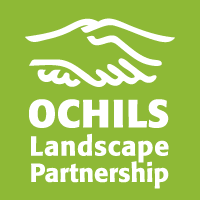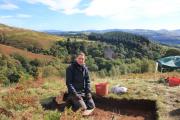Dollar Glen
This is an archaeology project jointly hosted by the Ochils Landscape Partnership and the National Trust for Scotland, to coincide with Scottish Archaeology Month.
Dig Dollar Glen 2012 saw a team of around 40 volunteers excavating a site on the north-west slopes of the Glen, behind Castle Campbell, under the expert guidance of archaeologists Liz Jones and Candice Hatherley.
The dig focused on two turf banks and an earth mound, with the intention of shedding more light on historic activities in the Glen. Various pieces of pottery and glass were found on-site, along with a piece of animal bone. The earth mound was revealed to be a small rectangular turf building. The team found a number of post-holes within this building, and there are signs that a fire had been lit in front of the entrance. One of the most exciting finds came late in the week, when one of the volunteers, Juliette Mitchell, found a piece of medieval pottery in the interior of the turf building. This allowed us to date the building to between the 13th and 15th centuries. There are still several theories about what the building may have been used for: while is seems too small to have been a dwelling, its position suggests that it may have been a look-out hut for the Castle, or it might even have been a smokehouse for meat or fish.
Excavation of the turf bank showed that it pre-dates the stone wall that runs alongside it. Although it has not yet been possible to date the turf bank, the team believes its function was related to deer hunting in the royal forest behind Castle Campbell.
Over the course of the week, around 70 visitors (plus many of their four-legged friends) were given tours of the site, most of them on the Open Day which took place on Saturday 22 September.
Dig Dollar Glen 2013
This year the team excavated a ruined two-roomed stone building on the slopes behind Castle Campbell, first thought to possibly be some sort of dwelling. In fact, it is now thought more likely to be the ruins of a medieval hunting lodge once used by the inhabitants of and visitors to the castle.
The team, made up of over fifty volunteers including Young Archaeologists and the Dollar Scouts discovered that the building’s remains sit centrally within a complex of banks and enclosures identified as features associated with the hunting estate. The volunteers and experts unearthed a number of significant finds - sherds of pottery, glass wine bottles, glass vessels, window glass and iron objects dating from the mid 17th century, with the vast majority of finds coming from the larger room to the north east of the structure.The type of objects found indicate that the building had a very high status.
The square room to the south east contained a well-built central stone lined drain surrounded by flagged and cobbles surfaces. In the corner of this room was a raised rectangular stone feature – possibly a stone trough or plinth. This room may well have been a stable or butchery for the deer that were hunted on the estate.
To see loads of photos of the dig, visit our facebook page. You can also see a wee 3D/CGI reconstruction in our film, The Ochils and the Locals, which puts the medieval hunting estate in its wider context.



